Taylor Swift’s Eras Tour Takes on a Darker, Weirder Sheen Post- Tortured Poets

- Oops!Something went wrong.Please try again later.
Michael Campanella/TAS24/Getty Images
The Swift circus swept into Stockholm, and us along with it. We giggled at passport control: What is the reason you are visiting Sweden? “The Taylor Swift concert,” we grinned one after the other, a plane three-fourths full of jet-lagged American Swifties on our way to the Eras Tour.
I was with Marriott on a press trip that mimicked a Marriott Bonvoy Moment — one of hundreds of experiences, purchased with points, that promise unique adventures for travelers like premium Swift tickets and hotel stays — and three ongoing Eras Tour sweepstakes for lucky fans who would win tickets to shows across the U.S., Europe, and Canada. Across three days, three journalists including myself would trawl Stockholm, exploring the sights and sounds, with a Marriott publicist named Kelly. (Among the things we learned from Kelly: Marriott is pronounced like MARE-e-yut, not Mare-ee-OTT, like I’d been saying for years.)
Kelly was more of a big picture fan of Swift, still delving into Tortured Poets and mostly unaware of the lore beyond Travis Kelce. At dinner we swapped Swift party games: Which album is your favorite? Which era do you identify with the most? Which ex would you choose? We rapid-fire explained various Swift phenomena to Kelly: easter eggs, Gaylorism, Matty Healy.
The journalists had all been fans for years, though we wryly called ourselves “critical Swifties,” unafraid to reckon with Swift as a person and persona in service of our work. The music we loved, the decisions we sometimes disagreed with, and the seemingly limitless cultural power she holds were all fair game for discussion. Enter: The Tortured Poets Department, an album whose addition to the Eras Tour on the European leg changes everything about the narrative this tour is telling. Swift has often written to critics and haters, but TTPD is her first album that harshly turns its gaze back on fans themselves.
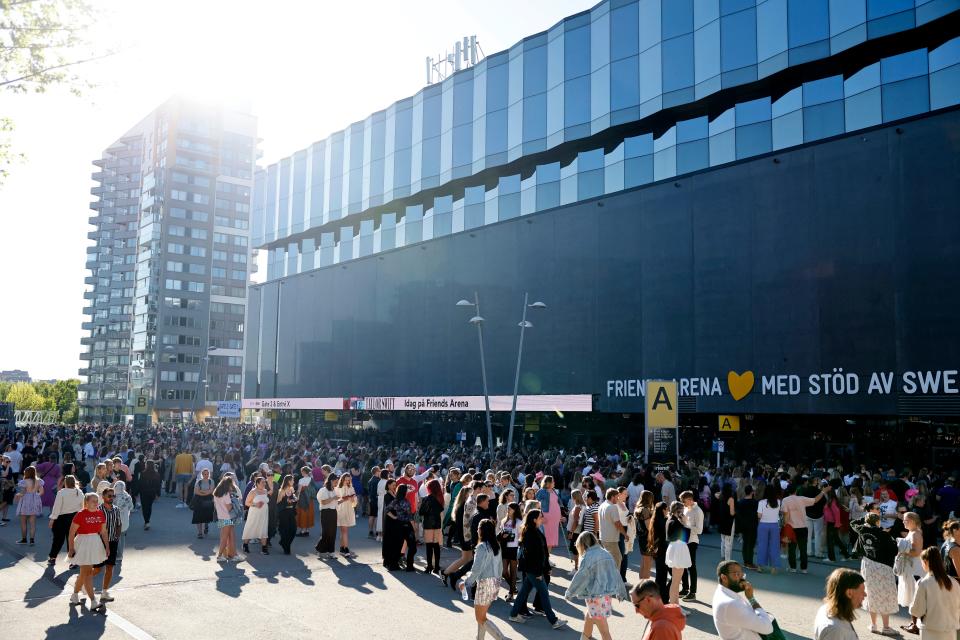
SWEDEN-MUSIC-TAYLOR SWIFT
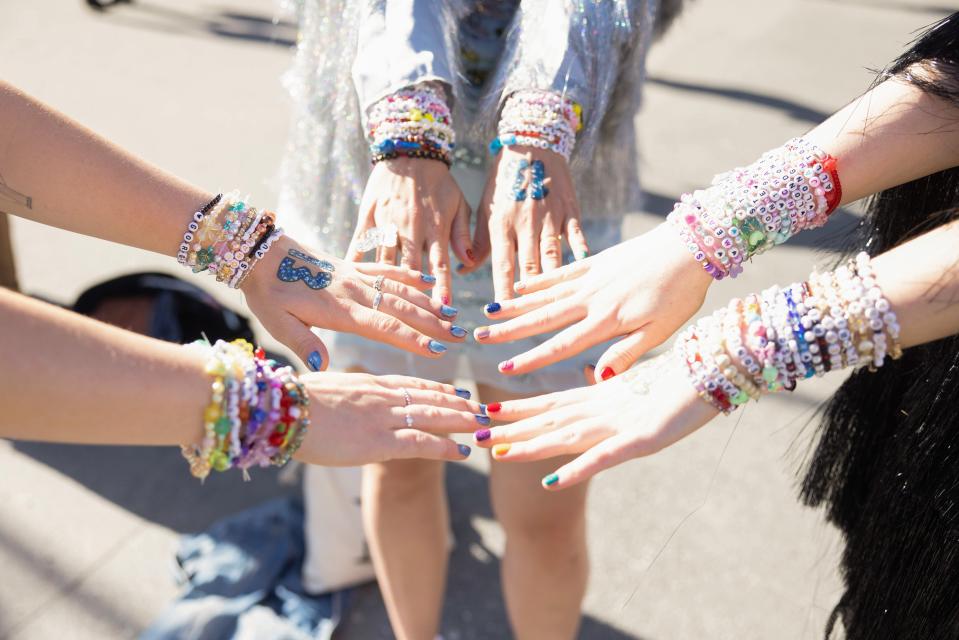
Taylor Swift | The Eras Tour - Stockholm, Sweden
Heading to Stockholm, Taylor Swift and those who adore her took over. “It’s like a Swiftie convention,” a 40-something woman told a friend as we boarded the plane in New York. In the queue: A man in his 30s wore a Kelce/Swift 2024 election-style shirt. A pair of 20-something friends had matching TTPD hoodies. A teenager dressed in Speak Now (Taylor’s Version) purple. In the Stockholm airport, a “Shake It Off” restaurant menu offered bubbles + bites.
In the city, a local bookstore featured a Taylor Swift book installation; a vintage shop played the last refrain of “August,” a radio station ran non-stop Swift songs, even the deep cuts. Swedish teens walked around with “Not a Lot Going on At the Moment” T-shirts. Her name was on the lips of locals, too, though mostly restaurant servers and bartenders and hotel staff; the people who deal with the real-word flood of tourism. (Fans were expected to spend about $46 million over the course of Swift’s shows in Stockholm, the Stockholm Chamber of Commerce chief economist Carl Bergkvist told AFP.) The city was officially christened Swiftholm. Later, we’d hear from Swift on stage that that night, the first of her three-night run in the city, her first time ever performing in the country, had broken the arena’s attendance record.
In the car to the hotel, our driver — a woman in her late 20s who was not a Swift fan — asked me how long I had been one. Since I was fifteen, I said. She’s part of me, even when she does things I don’t like.
I thought about the disclaimer, as it’s one I’ve been uttering since around 2015/2016, when loving Taylor Swift was already a cemented part of how I was perceived to the people around me, and when people — myself included — started seeing the holes in the public construct of Taylor Swift. Mounting political discourse and fear, a looming Trump presidency and Swift’s silence, a Kanye West controversy that seemed to be part of an unfortunate pattern: a white woman cries victimhood and emerges with public sympathy. But the sympathy ran out.
That period of time in her celebrity has stuck with her and shaped the stories she tells. She told TIME in 2023, “It’s not lost on me that the two great catalysts for [the success of the Eras Tour] were two horrendous things that happened to me … The first was getting canceled within an inch of my life and sanity … The second was having my life’s work taken away from me by someone who hates me.” On a new “bonus track” first draft of TTPD song “Cassandra” — sold on TaylorSwift.com for $6.99, one of three special edition digital albums that you buy individually to get their respective first drafts, marking at least 24 total album variants so far — she says this of the song: “In Greek mythology, Cassandra was brought on by Apollo to always warn people of impending doom but she was cursed to never be listened to...so read into this what you will based on our current social and cultural climate.”
Now, there are new things to disclaim about being a Taylor Swift fan, alongside the old ones: the private jet usage and resulting carbon emissions, the billionaire status, the renewed political silence on social media, the relentless glut of album variants and chart jockeying, and did you hear she dropped an album with 31 songs? Way too many, she’s flooding the market. Swift has already beaten us to the punch line: it’s exhausting rooting for an anti-hero. And that’s not even accounting for the fan base itself, the issues that come up when millions of people are obsessed with the same thing: defensiveness, internet pile-ons, racism and harassment and doxxing over bad reviews.
The headlines piled up even over the three days we were in Stockholm. We enjoyed lavish meals with seven-plus courses of small plates at restaurants on the water, toured the city’s Old Town (Gamla Stan), and made friendship bracelets in the Nobis Hotel lobby. At the Sturebadet baths, a masseuse pressed hard into my tense right shoulder as I heard a group of elderly Swedish women doing water aerobics to ABBA’s “Waterloo.” We shopped as “Bad Blood” filtered through speakers we couldn’t see.
Meanwhile, Swift dropped album variants and took a trip with Kelce to Lake Como; ET Online reported an engagement was coming “sooner rather than later.” Months ago I joked with colleagues after the Grammys that Swift was purposely out to fatigue us, to recreate the exact 2017 circumstances that led to reputation as we gear up for reputation (Taylor’s Version). Now, that narrative myth is generally accepted as true even among Swifties, a certain set of whom are glad to have a weed-out era to thin the competition for tickets and merch. (I’m not sure that’s happening.)
Here’s where I disclaim the disclaimer, where the fan jumps out: This is not entirely Swift’s fault. Who makes flying commercial untenable for her? The hordes of fans intent on trespassing personal boundaries and projecting their identities onto her. Should we be relying on celebrities to catalyze revolutionary change? Of course not. Did she ask to be built this high, pedestalized to the perceived ruination of her personal life, projected upon eternally for once being a teenage girl with a specific knack for transforming volatile emotions into earworms? No… but what if she did? How much blame lies with her vs. us? It’s a question TTPD is interested in exploring — especially at the Eras Tour — even if she comes to few finite answers and even fewer concessions to valid critiques of her immense wealth and how she wields her unending power.
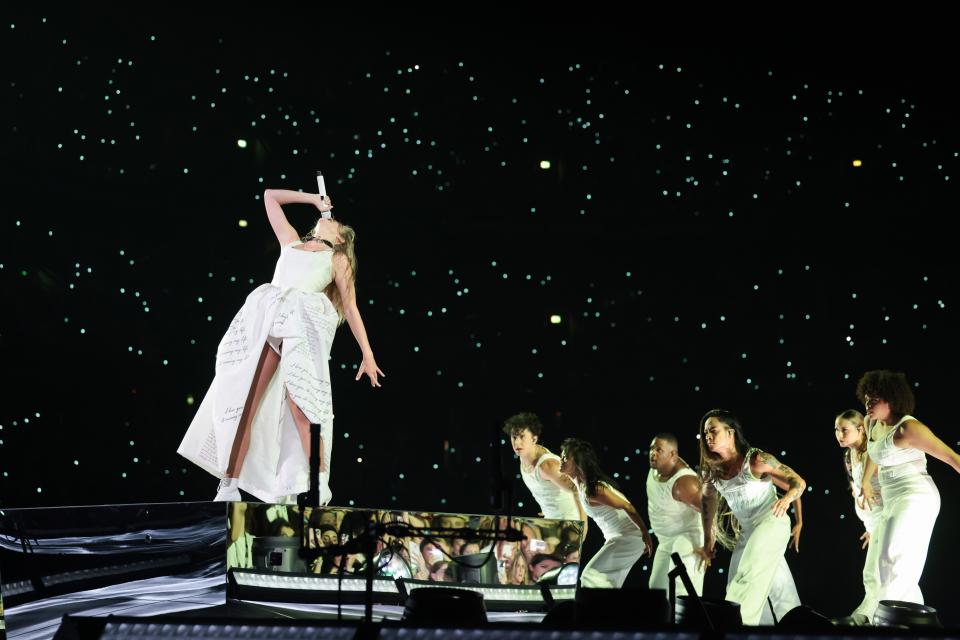
Taylor Swift | The Eras Tour - Stockholm, Sweden
Stockholm was my third Eras Tour show; I attended night one of the entire tour with my sister over a year ago in Glendale, Arizona, to review the show for Teen Vogue. A few months later, I went to Philly night two with my childhood best friend, purely as a fan. By Stockholm, my stamina had replenished, and the fan side of me switched on: the other journalists and I exclaim every few minutes how excited we are on the way to Friends Arena. That nostalgic giddiness from the airport is back. I exist in the context of every Taylor Swift show that has come before me and every one I have ever attended.
The weekend before, in Paris, Swift introduced a refreshed Eras Tour; she slashed songs (including my beloved “Long Live”), combined evermore and folklore into one era, and then re-ordered the eras themselves to make room for TTPD. The result is a better-paced set that hits you again and again with how good she is as a performer and songwriter.
There’s always a moment during a Swift show where she triggers a montage of my own romantic experiences: the guys who never liked me back, the girls I couldn’t make stay, the people I hurt, too. This time it happened during “All Too Well (10 Minute Version),” and I thought about how a song changes as you get older, as you amass more and more reference points. I thought about the people who will never know how I’ve thought about them — those moments of admiration and obsession and projection, a crush that can never be explained to someone’s face. I thought about how that’s maybe why I keep coming back to Swift album after album: she gives you the freedom to imagine a single moment as a whole universe, to fantasize and rewrite history, to interpret what happens to you and then reinterpret as you get older. So pretty to think of all the different people I was in every album cycle, and all the people I wanted, and the ways I’ve stayed the same over time, too.
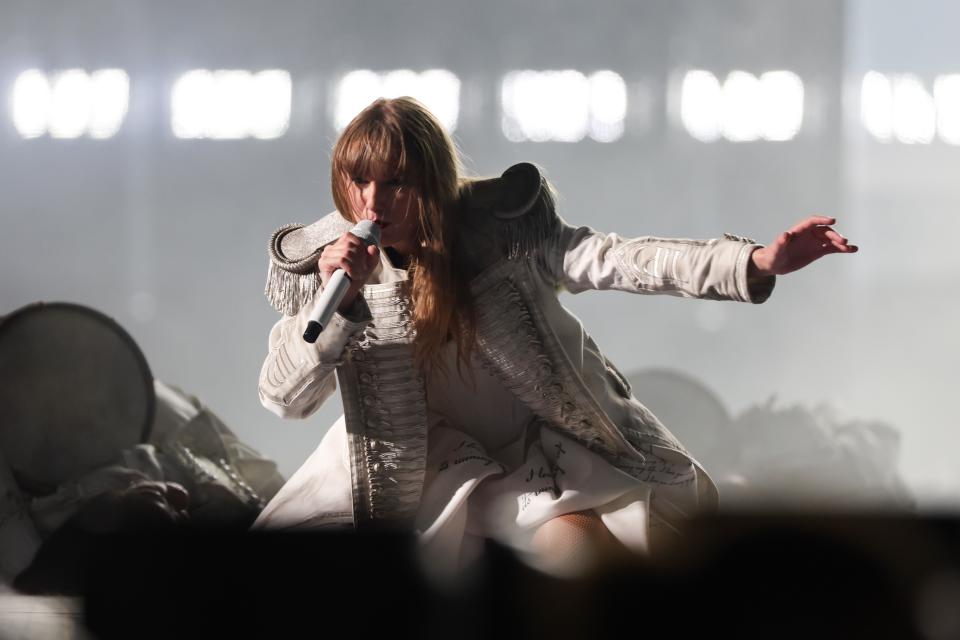
Taylor Swift | The Eras Tour - Stockholm, Sweden
But this show, more than any other Swift show I’ve seen in my lifetime, had a shadowy, eerie tinge. She has an ongoing bit about how she wrote these songs about her own experiences and ideas, but she hopes we don’t necessarily think of them like that. Instead, always think of this night when you hear them, a memory made together. Subtextually, she urges, let them become memories of our relationship to and with her.
That lens felt especially apparent to me in Stockholm. “My reputation’s never been worse, so you must like me for me,” and “You can tell me when it’s over if the high was worth the pain” and “Someday when you leave me I hope these memories follow you around” and “Now we’ve got bad blood, now we’ve got problems” accompanied by pointing at the audience. Is this play about us? TTPD offers up an answer: yes.
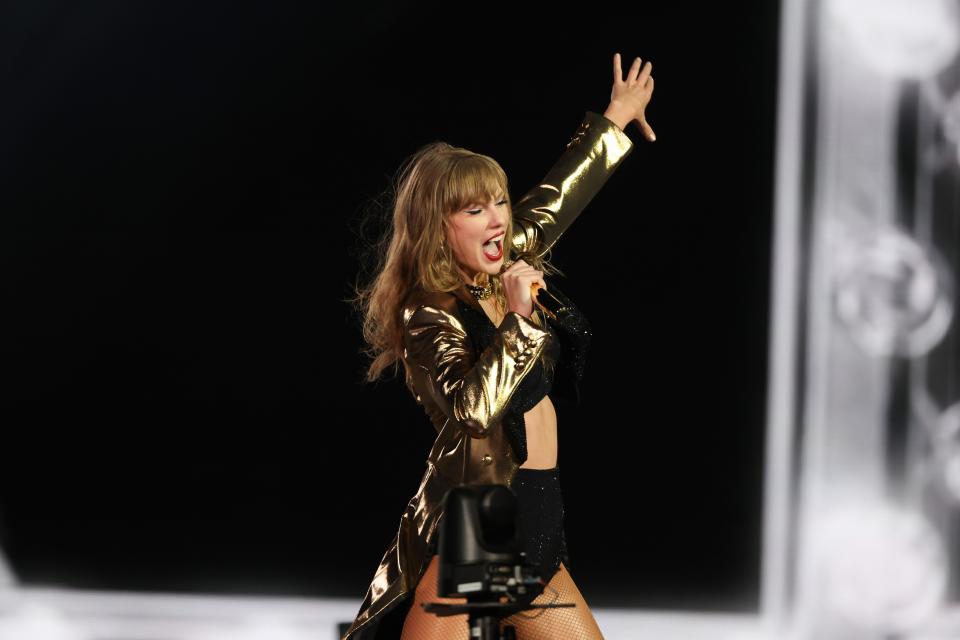
Taylor Swift | The Eras Tour - Stockholm, Sweden
Across six songs, Swift takes us through a theatrical madness, one she’s seen coming for years and was still powerless to head off. The set is captivating, elaborate, disturbing, even uncomfortable — and more riveting because of the discomfort. She glides around on the mirrored Roomba box and glares at her audience, clawing at them, cursing them. Her eyes are missing from the sockets. The real Swift and a negative photo image Swift morph into one. She dons a white military jacket and takes red-light blows, falls to the floor, refuses to get back up. But wait! She can still do it all, still be the perfect professional, still come back from every criticism, still emerge bigger and stronger and more fearsome and simultaneously so, so happy, happier than she’s ever been. Actually, she may be miserable, but she’s more powerful than ever.
In real life, the set ends, and the tension breaks. Swift emerges happy and excited again to remind us how much she loves us with the surprise songs. No bad blood, really, and wow aren’t we such a good audience for her? She’s never loved an audience so much. No really, honest. Here’s “Peter.”
But imagine a world where she ends with the TTPD set, and specifically, “I Can Do It With a Broken Heart.” To end on Midnights makes the narrative too neat. The anti-hero has shrugged off the expectations of others, karma has won out. We’re Swift surrogates once more; we’re safe again.
If “I Can Do It With a Broken Heart” is the closer, the story becomes the devolution of a pop star: a dreamer descends into cynicism, an open book becomes closed, the things we thought we knew as teenagers turn out to be untrue. The things we thought we knew about her, also untrue.
Maybe it’s better to lean in, if you’re going to call this set “Female Rage: The Musical.” Let it all out. Tell us how we ruined your love life, how we built you so high only to relish in the fall, how our obsession is a prophecy you’ll never be able to shake.
But if she did all of that, maybe I’d write that it was a little too on the nose.
In need of a travel upgrade?

Samsonite Executive Leather Convertible Backpack
$199.00, Samsonite

Outline Pro Carry-On Spinner
$199.00, Samsonite
Originally Appeared on Teen Vogue
Want more great Culture stories from Teen Vogue? Check these out:
A New Generation of Pretty Little Liars Takes on the Horrors of Being a Teenage Girl
Underneath Chappell Roan’s Hannah Montana Wig? A Pop Star for the Ages
Donald Glover’s Swarm Is Another Piece of Fandom Media That Dehumanizes Black Women
On Velma, Mindy Kaling, and Whether Brown Girls Can Ever Like Ourselves on TV
Gaten Matarazzo Talks Spoilers, Dustin Henderson, and Growing Up on Stranger Things
How K-pop Stars Are Leading Mental Health Conversations for AAPI People and Beyond
Meet the Collective of Philly TikTokers Making You Shake Your Hips
The Midnight Club Star Ruth Codd Isn’t Defined By Her Disability

